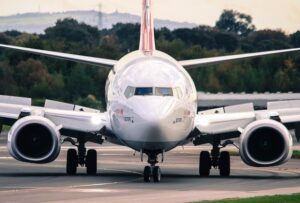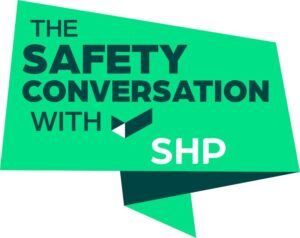Following news that Boeing is investigating the blowout of a panel onboard one of its planes, we revisit Tim Marsh’s 2022 article, that questioned the company’s safety record.
 Recently in a discussion with a potential client I quipped that they didn’t need a consultant at all – they just needed to gather as a management team and watch the Netflix film ‘Downfall’. Then – ‘don’t do that’.
Recently in a discussion with a potential client I quipped that they didn’t need a consultant at all – they just needed to gather as a management team and watch the Netflix film ‘Downfall’. Then – ‘don’t do that’.
It is perhaps the most straightforward safety case study of all time with a company with a once excellent culture and worldwide reputation reduced to one with a terrible culture that was fined $2.5 billion dollars following two of their planes simply falling from the sky killing hundreds of passengers.
Background
Initially, Boeing were a company driven by engineering excellence. Working out of Seattle they built innovative planes with great professionalism and pride. The Jumbo 747, in particular, transformed global travel and made the world a more connected place decades before Zoom was invented. The well-known passenger saying ‘If it aint a Boeing then I aint going’ a real badge of honour. On a day-to-day level, engineers that spotted potential issues during design and build were lauded and the observations welcomed. It was, by consensus, an open, continuously improving, learning focused and empowered culture.
Then it all went horribly wrong
Following a merger with the Chicago based McDonald Douglas in 1997, profits and share price weren’t left to take care of themselves but became the primary focus. In this new world (think Gordon Gekko of the film Wall Street) employees and teams were actively encouraged to share ownership of the stock market price as the ultimate tracker of success. (A spectacularly naive, perverse and deranged view of what motivates the average human psyche if you ask me even before we talk about what inevitably happens next). Hugely symbolically, HQ is moved from Seattle to Chicago. In part, this is so engineering teams alarmed and enraged by the many ‘tough but argued to be necessary’ commercial decisions are a thousand miles away and not in the same building.
What inevitably happens next is that a blame culture develops where no news becomes “good news” and where engineers that raise concerns – inconveniently in writing in particular – are no longer seen as useful but as troublemakers. The previous culture of excellence degrades quickly.
Then, facing strong competition from Europe’s Airbus, the decision is made to not spend years designing a new plane but to upgrade an existing one that’s decades old. Initially, this is a success. Upgrading the original 737 (long proven) is quicker but there are also, crucially, fewer regulators to satisfy and, even more crucially for sales potential, no expensive training needed for the pilots of potential customers. And this commercial call does indeed turn into large share price boosting sales for the 737 ‘Max’…
But, the more fuel-efficient engines are bigger and need slight repositioning and require a bit of automatic kit (the MCAS) that points the plane in the right direction and helps stop the nose raising and the plane stalling. The trouble is that if the MCAS malfunctions, then pilots have just 10 seconds to prevent the plane being put into an irreversible dive. Unbelievably, that kit wasn’t designed to come with a second line of defence should it fail so it was always going to be the pilots that saved the plane. Incredibly, by Boeing policy, the pilots of the customer airlines weren’t trained in this – indeed the pilots didn’t even know the new kit MCAS function existed.
The First Crash
In October 2018, Lion Air Flight 610 crashes with all 189 on board killed when the MCAS system fails again. Boeing (with hugely racist undertones) point at the Indonesian pilot saying that this wouldn’t have happened in the US. In the film, the famous ‘Miracle on the Hudson’ pilot Chesley Sullenberger pops up to say, ‘yes it would’. (I’ve no idea if he added off camera ‘because we’re not clairvoyant either’). Boeing hold this line despite (or perhaps appallingly because of) in-house data predicting a plane will fall out of the sky every two years on average…
Then, with Boeings management sitting in Chicago performing mental gymnastics of the worst kind (or worse) and crossing their fingers, just five months later, in March 2019 Ethiopian Airlines flight 302 crashes in a near identical incident in the sea off Ethiopia, with 157 killed. Incredibly, (unless you know how cultures work) Boeing remain defensive and bullish and now seek to blame the African pilots. However, when China are first to ban the 737 Max and many others following suit soon after, the entire fleet need to be grounded for almost two years.
I’d urge readers to watch the film if they can. My prediction: you’ll think that a $2.5 billion dollar fine paid to avoid any prosecutions was getting off very, very lightly indeed. This is a corporate Faustian pact with the devil manifest through safety culture. It’s not nuanced at all. Yes, profit (or Gekko’s ‘greed is good’) can drive innovation and efficiency but what use is that to anyone but shareholders (in the short term) if all values, principles and humanity are lost? Though sympathy goes first of course to the passengers and their family and friends we might also be mindful of the thousands of dedicated and hardworking engineers and employees of Boeing who’s lives and careers have been sullied and tarnished forever by association. (What Sidney Dekker calls the ‘third tranche’ of victims).
It is, I think, as simple and sickening a case study as I’ll ever have the misfortune of summarising.
Postscript
On 21 March 2022, a different version of the Boeing 737 fell from the sky in China killing 132 people. Though, at a glance, a very similar incident, it was not a 737 Max and was not fitted with the (now revamped) MCAS system. So, it might therefore prove, in time, to be an entirely unrelated incident. Just pure coincidence. Or it might be that, as we all well know, a poor culture begets all sorts of issues that manifest in many varied and different ways and that it typically takes years to put a poor culture right.
The Safety Conversation Podcast: Listen now!
The Safety Conversation with SHP (previously the Safety and Health Podcast) aims to bring you the latest news, insights and legislation updates in the form of interviews, discussions and panel debates from leading figures within the profession.
Find us on Apple Podcasts, Spotify and Google Podcasts, subscribe and join the conversation today!

 Recently in a discussion with a potential client I quipped that they didn’t need a consultant at all – they just needed to gather as a management team and watch the Netflix film ‘
Recently in a discussion with a potential client I quipped that they didn’t need a consultant at all – they just needed to gather as a management team and watch the Netflix film ‘
Regurgitated Netflix hearsay this article is. All speculation
Hi Mike, thanks for the comment. It’s a blog/comment piece and so speculation is exactly how it is meant to be perceived. It’s aim is to be thought-provoking and to start conversations and debate.
Why is aviation seen as a beacon of safety? Low accident rates are not indicative of how well safety is managed. In my 35 years experience in aviation, whilst many rules exist [too many], it suffers from the same drift as any other industry. After all, its humans and systems with a commercial driver and for all the chat about being open and Just…..ok!
Is aviation bad? No, its just not as good as it thinks it is and that part of the issue.
Thank you Nick … very insightful.
Interesting comment Mike. You’re right – I am pointing readers primarily at the Netflix film … though the Boeing and Netflix lawyers have presumably had many and detailed conversations about it’s veracity. But, as Ian says, this a debate starter so lets debate. Who are you? Who do you work for? What do you think, specifically, is inaccurate about the article/ film? If it wasn’t a change in the culture following the merger that led to the single biggest grounding of planes in aviation history – what was it? How do you defend a (proven) potentially fatal change to the… Read more »
Having recently left a major player in the aerospace & defence industry post-pandemic after an enormous cost cutting exercise to “remain commercially viable” and having seen the culture of “gold standard” erode to less than basic legal compliance, directly associated with the pandemic or otherwise, this blog resonates very clearly with me. As per the mantra that the crime is no longer “causation of harm”, but now rather “allowing the risk of harm to arise”; this article rings very true – Hollywood or Hollinwood as we say in these parts.
Many thanks David. Boeing have never been a client and I wasn’t party to any inquiry so as ‘Mike’ suggests I’m working second hand. But I’ve seen many a case study from a client and formal inquiry ‘ legal perspective and it looks like an absolute classic example of its kind to me.
Cheers Tim, thought provoking as ever, I might even invest in Netflix to watch this when I finally get another job! 🙂
Agree, an excellent film with vital learning for society and many industries Thank you for highlighting to readers. Informative for general audience and will motivate specialists to source the copious further details available. Good blog comments, but like the film you gloss over the important contribution to the incident from the regulatory approach which merits careful consideration. Simple failures by FAA to see significance of new engines and positioning or recognise MCAS role. Further the unintended consequence of system designers avoiding highlighting the MCAS as ‘safety critical system’ to FAA, with its resultant pilot training requirement. So designers omitted detector… Read more »
Hi Tom. FAA glossed over because I’m a culture expert only in truth. But it sounds to me like there’s a more technical/ regulatory focused sister paper you might write here … love to read it! (There’s an excellent related film about US FAA failings by the BBC i once reviewed but the name currently escapes me! The power of lobbying the core element I seem to recall …)
Excellent article Tim. I watched the programme just a few weeks ago and compared it to the events and crowd safety industry. I think we may currently be the McDonald Douglas version where we should be what Boeing was. Now I just need to work out who to do a merger with to make that happen!
A top consultancy firm to orientate your board then train your management is all you need Eric … (sorry WAY to obvious a comment!) Best to just say thanks for the kind comment!
Nice blog there Tim. Certainly starts a conversation for sure.
I too would be interested in ‘Mike’s’ comments to be better explained, as currently it holds no merit.
Thanks Mitch and … just an occupational hazard … PS There’s a wonderful scene in the film Mike Basset England Manager where a fan berating said manager after a shambles of a performance is challenged ‘so what would you have done then?’ … but the fan isn’t fazed and gives a hugely concise and astute response … Bassets response to that is short and pithy (and channelled in more formal language above!).